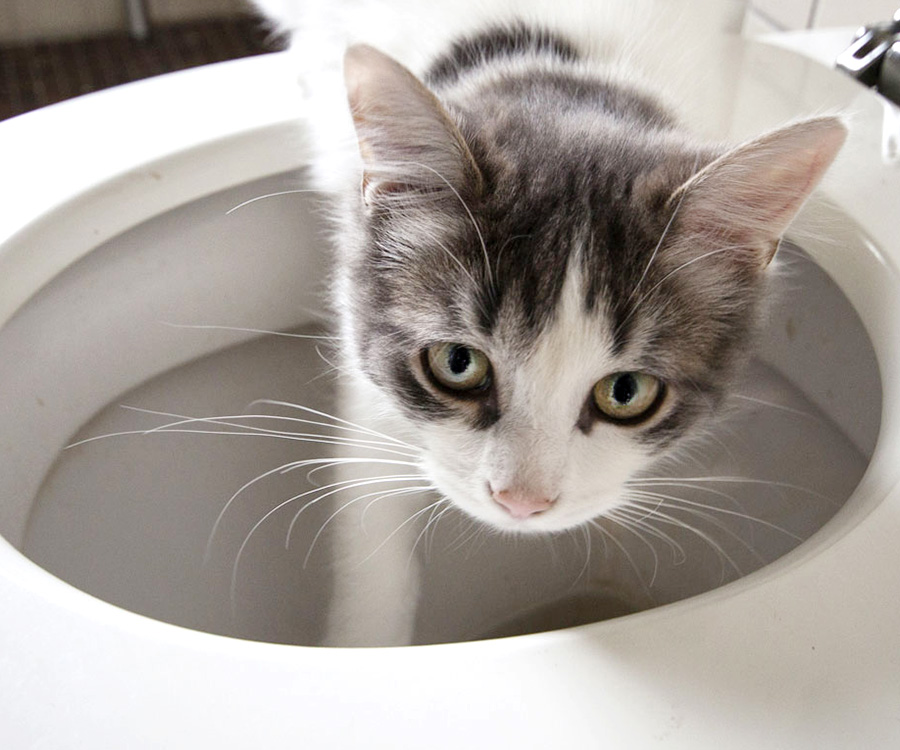Explanations Why You Have to Never Get rid of Animal Waste Down the Toilet
Explanations Why You Have to Never Get rid of Animal Waste Down the Toilet
Blog Article
Are you currently interested in info around Should you flush animal waste down the toilet?

When it pertains to disposing of waste, specifically animal waste, many people commonly resort to the practical alternative of flushing it down the toilet. Nevertheless, this apparently very easy solution can have significant consequences for the environment and public health. In this short article, we'll check out why flushing animal waste down the toilet is a bad idea and provide alternative methods for appropriate disposal.
Intro
Proper waste disposal is essential for maintaining environmental sustainability and public health. While it may seem safe to purge animal waste down the bathroom, it can result in various concerns, both for the atmosphere and human well-being.
Dangers of flushing pet waste
Environmental influence
Flushing pet waste presents damaging bacteria and microorganisms right into waterways, which can adversely influence aquatic ecological communities. These microorganisms can infect water sources and harm marine life, disrupting delicate environments.
Public health worries
Pet waste has unsafe microorganisms such as E. coli and Salmonella, which can position serious health threats to humans. Purging pet waste down the toilet can contaminate water supplies, bring about the spread of diseases and infections.
Alternatives to flushing
Rather than flushing pet waste down the commode, there are several alternate disposal approaches that are more eco-friendly and sanitary.
Composting
Composting animal waste is an environmentally friendly means to throw away it. By composting, organic matter is broken down right into nutrient-rich soil, which can be made use of to fertilize yards and plants.
Landfill disposal
Dealing here with pet waste in a garbage dump is an additional choice. While not as eco-friendly as composting, it is a safer choice to flushing, as it avoids the contamination of water resources.
Pet garbage disposal systems
There are specific pet dog waste disposal systems offered that securely and hygienically take care of animal waste. These systems typically make use of enzymes to break down waste and eliminate odors.
Actions to proper animal waste disposal
To make certain correct disposal of pet waste, follow these steps:
Scooping and nabbing waste
On a regular basis scoop and bag pet waste making use of biodegradable bags. This prevents waste from infecting the setting.
Utilizing assigned waste containers
Dispose of bagged animal waste in designated waste bins, such as compost containers or garbage dump bins. Prevent flushing it down the toilet at all prices.
Cleaning litter boxes and pet dog locations consistently
Regularly tidy can and pet dog locations to prevent the build-up of waste and bacteria. Usage pet-safe cleansing products to maintain health.
Advantages of correct disposal methods
Adopting proper disposal methods for pet waste supplies numerous advantages:
Lowered environmental pollution
Appropriate disposal methods reduce the threat of environmental pollution, securing waterways and ecosystems from contamination
Lessened threat of water contamination.
By avoiding flushing animal waste down the toilet, the danger of water contamination is considerably decreased, guarding public health.
Improved sanitation and hygiene
Proper disposal methods promote better sanitation and health, producing a much safer atmosphere for both people and animals.
Conclusion
In conclusion, purging pet waste down the bathroom is dangerous to the atmosphere and public health. By adopting alternate disposal methods and adhering to correct waste administration techniques, we can lessen the negative influence of animal waste and add to a cleaner, healthier earth.
What To Do With Dog Poo – The Do's And Don'ts Of Disposing Of Faeces
Dog poo bins
Some councils provide dedicated dog waste bins in popular dog-walking areas that can take dog poo that has been bagged but you can legally dispose of dog waste in any public litter bin, as long as it is securely bagged. This also applies to your wheelie bin at home.
Do not flush
Water companies do not recommend flushing dog faeces down the toilet because certain parasites can survive the water processing treatment and are potentially harmful to humans. You should also never consider flushing dog poo that has been bagged down the toilet as the bags will not break down and instead create severe blockages in the sewage system.
In the woods
The Forestry Commission promotes a ‘stick and flick’ method for dealing with waste in the woods. This means finding a stick and using it to flick any poo from off the path so that it is out of the way of other walkers. You could also bury it as long as it is not in an area where there might be livestock.
Livestock
Parasites found in dog poo can be transmitted to livestock if they inadvertently eat infected faeces that has been left on grazing land. This could result in the death of sheep or abortion in cattle so you should always make sure you pick up your dog’s waste in fields where livestock could be present.

Regularly tidy can and pet dog locations to prevent the build-up of waste and bacteria. Usage pet-safe cleansing products to maintain health.
Advantages of correct disposal methods
Adopting proper disposal methods for pet waste supplies numerous advantages:
Lowered environmental pollution
Appropriate disposal methods reduce the threat of environmental pollution, securing waterways and ecosystems from contamination
Lessened threat of water contamination.
By avoiding flushing animal waste down the toilet, the danger of water contamination is considerably decreased, guarding public health.
Improved sanitation and hygiene
Proper disposal methods promote better sanitation and health, producing a much safer atmosphere for both people and animals.
Conclusion
In conclusion, purging pet waste down the bathroom is dangerous to the atmosphere and public health. By adopting alternate disposal methods and adhering to correct waste administration techniques, we can lessen the negative influence of animal waste and add to a cleaner, healthier earth.
What To Do With Dog Poo – The Do's And Don'ts Of Disposing Of Faeces
Dog poo bins
Some councils provide dedicated dog waste bins in popular dog-walking areas that can take dog poo that has been bagged but you can legally dispose of dog waste in any public litter bin, as long as it is securely bagged. This also applies to your wheelie bin at home.
Do not flush
Water companies do not recommend flushing dog faeces down the toilet because certain parasites can survive the water processing treatment and are potentially harmful to humans. You should also never consider flushing dog poo that has been bagged down the toilet as the bags will not break down and instead create severe blockages in the sewage system.
In the woods
The Forestry Commission promotes a ‘stick and flick’ method for dealing with waste in the woods. This means finding a stick and using it to flick any poo from off the path so that it is out of the way of other walkers. You could also bury it as long as it is not in an area where there might be livestock.
Livestock
Parasites found in dog poo can be transmitted to livestock if they inadvertently eat infected faeces that has been left on grazing land. This could result in the death of sheep or abortion in cattle so you should always make sure you pick up your dog’s waste in fields where livestock could be present.

I'm certainly very interested by Don't Flush Your Pets Poo Down The Loo, Vet Warns and I really hope you appreciated the new page. For those who enjoyed reading our article please consider to share it. We recognize the value of your readership.
Schedule Now Report this page